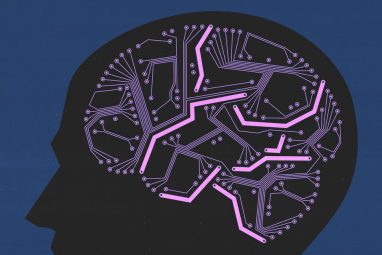How IAN Taps AI and GenAI to Boost Speed, Quality of Investing
Padmaja Ruparel, Co-Founder of Indian Angel Network Group in her exclusive interview with MIT Sloan Management Review, India shared how IAN is leveraging technology to improve both speed and quality of investing.
Topics
News
- Google Bridges Cloud Power and Privacy with Private AI Compute
- California’s Genspark Enters AI Unicorn Club with $200 Million Round
- OpenAI Taps Intel’s Sachin Katti to Build Compute Backbone for AGI
- Flipkart Brings Voice-Led Wholesale Ordering to WhatsApp with Sarvam AI
- Varun Berry Steps Down at Britannia, Rakshit Hargave to Take Over
- OpenAI Issues Warning on AI’s Acceleration From Inside the Fast Lane

Indian Angel Network (IAN) is using technology to improve both the speed and quality of early-stage investing, said Co-Founder Padmaja Ruparel in an exclusive interview with MIT Sloan Management Review India, where she outlined how the venture platform is enhancing its digital capabilities to manage a growing volume of opportunities.
India’s largest horizontal platform for seed and early-stage investing, IAN is seeing a steady rise in deal flow, with Ruparel attributing this to the country’s fast-growing startup ecosystem.
The early-stage investor pool has also expanded rapidly, backed by domestic capital from venture capital funds, family offices, corporate ventures, high networth individuals, and the Fund of Funds.
This year alone, 1,337 startups raised a total of $14.4 billion—up from just over $5 billion in 2014, Ruparel said.
To stay ahead, IAN has made technology central to its investing process.
“AI and GenAI have increased the speed and output of investible deals for us,” Ruparel said. The tools are constantly learning about sectors, business models, and risk levels aligned with IAN’s investment thesis.
Large language models (LLMs), in particular, help the platform engage rapidly with domain experts both within the network and beyond.
“With an angel network of 500 and a fund investor base of over 150, we’ve increased our access and ecosystem almost tenfold,” she said.
Ruparel said IAN has embedded digital tools to not only deliver investment data more efficiently but also help investors align new opportunities with their existing portfolio. This enables more informed risk-taking and sharper understanding of potential portfolio impact.
On the operational side, IAN uses everyday tools such as ChatGPT and Notion to streamline administrative workflows and improve team alignment.
“Most importantly,” she said, “as we increase technology enablement, our team gains a better understanding of LLMs and ChatGPT, and how these can be applied innovatively. This helps them conduct better due diligence and work smarter.”
Ruparel said India is the world’s largest digital economy and home to 16% of global AI talent, with its AI industry expected to grow at a compound annual rate of 45% to $29 billion by end-2025, based on a Wheebox-NSDC report.
India’s large, diverse population makes it an ideal testbed for scalable AI applications, with real-world potential in healthcare, climate action, agriculture, and space.
“We boast one of the world’s youngest, most versatile developer pools—adept at both cutting-edge research and frugal, resource-efficient engineering,” she said. However, she emphasized the need for greater investment in core R&D to drive truly breakthrough innovation.
As digital adoption accelerates, from healthcare systems to agricultural supply chains, India is seeing a surge in real-world data, prototypes, and pilot projects. This “living lab” environment, she said, gives deeptech ventures the space to iterate quickly and validate at scale.
Policy support is also growing. The Digital Personal Data Protection (DPDP) Act and the IndiaAI Mission are laying the foundation for responsible innovation, backed by R&D grants, startup capital, and sector-specific incentives. This ecosystem, Ruparel said, plays to India’s strengths: achieving scale at low cost.
“By channelling talent, test-bed opportunities, and policy support into focused deeptech corridors—whether in precision-medicine clusters, agri-tech hubs, or space-tech ecosystems—India won’t just join the global AI race; it will set the pace.”
She pointed to a surge in deeptech startups focused on AI, robotics, quantum computing, and semiconductors. Many of these are building strategic capabilities for national interest—whether in defense, space, or dual-use technologies.
Ruparel also addressed how IAN is navigating global shifts.
“Our core focus is Build-for-Bharat, Ready-for-World,” she said. Startups backed by IAN are building for India first—localizing manufacturing, talent, and essential infrastructure—while ensuring they meet global standards. This strategy positions them to take advantage of trade deals such as the India–UAE CEPA, the upcoming India–UK pact, and Australia’s ECTA.
“If it works in Bharat, it can succeed anywhere,” she said.
By backing home-grown innovation across defense tech, precision agriculture, and space systems, IAN is helping reduce dependence on imports and build sovereign capability.
Ruparel stressed that in an increasingly uncertain geopolitical landscape, self-reliance isn’t just strategic—it’s essential.
“We focus on founders building India’s critical technologies,” she said. “What works for India often works for the world—and Indian products are becoming globally competitive.”




